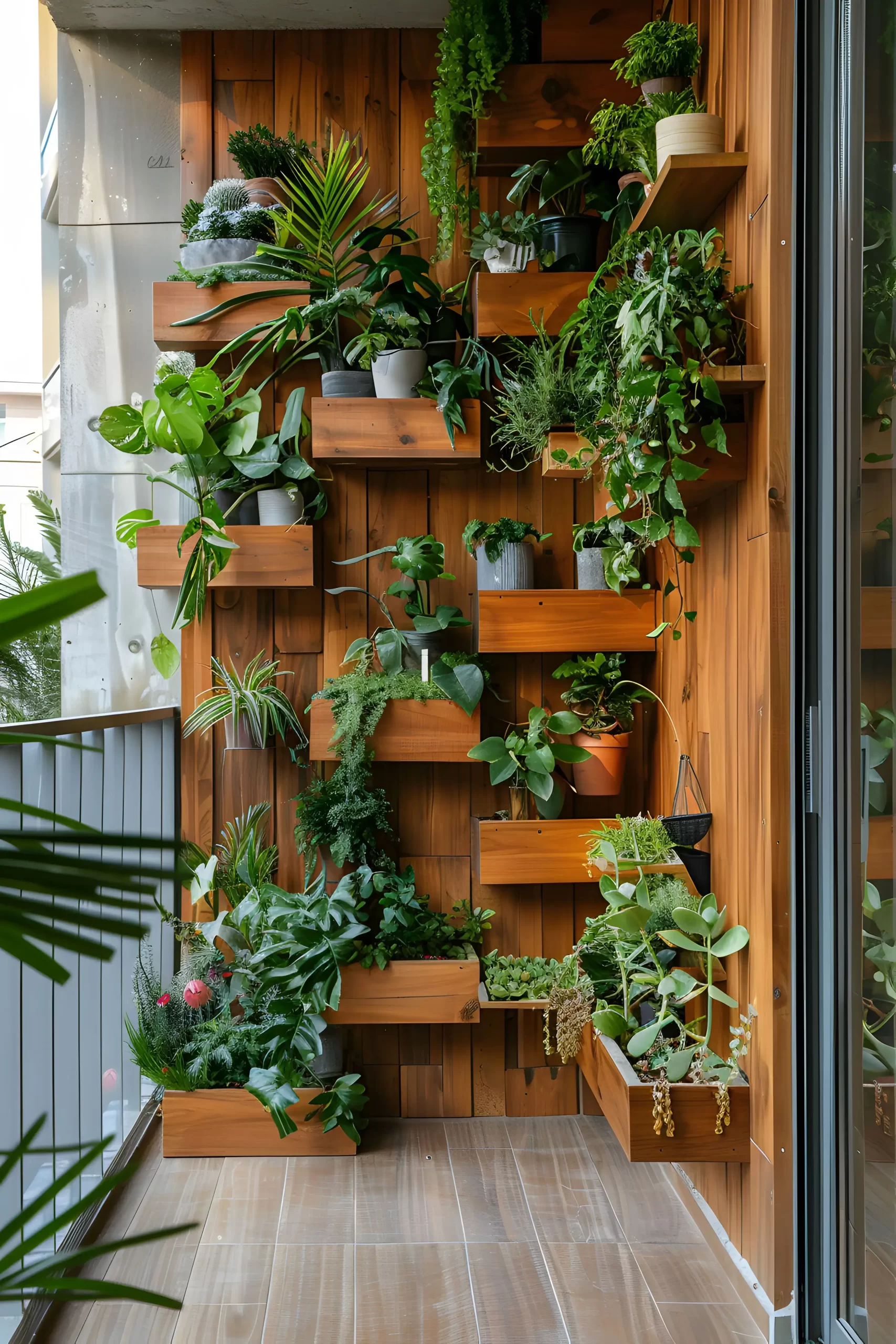
Living in urban areas often means limited outdoor space, but that shouldn’t deter you from cultivating a beautiful garden. Vertical gardening is an innovative solution that allows you to make the most of small spaces by growing upwards instead of outwards. Whether in an apartment with a small balcony or a tiny backyard, vertical gardens can transform any area into a lush oasis. Here are some creative and practical vertical gardening ideas for small spaces that can help you maximize your green thumb.
1. Wall-Mounted Planters
Wall-mounted planters are a popular choice for small spaces. They attach directly to a wall, creating a vertical garden that is both stylish and functional. You can use wooden or metal frames, shelves, or modular panels to hold a variety of plants. This method is particularly effective for growing herbs, succulents, or small flowering plants. For an added touch, consider arranging the planters in geometric patterns to create an eye-catching design.
2. Hanging Gardens
Hanging gardens are a fantastic vertical gardening idea for small balconies or patios. You can use hanging baskets, pots, or even repurposed containers like old teapots or mason jars. Secure them to the ceiling or a sturdy overhang, and fill them with trailing plants like ivy, ferns, or petunias. Hanging gardens save space and add layers of greenery at different heights, giving your small garden a more dynamic look.
3. Pallet Gardens
Using wooden pallets is one of the most cost-effective and sustainable vertical gardening solutions. A repurposed pallet can be mounted vertically against a wall or fence, with each slat acting as a shelf for small pots or containers. Pallets are particularly great for growing herbs, strawberries, and lettuce. To add a personal touch, paint the pallet in a color that complements your outdoor decor.
4. Tiered Plant Stands
Tiered plant stands offer a simple yet elegant way to grow multiple plants in a limited space. These stands come in various sizes and shapes, such as ladders or tiered shelves, and can accommodate many plants. Use the lower tiers for larger pots and the upper ones for smaller plants. This method is perfect for creating a cascading effect with flowering plants or showcasing a collection of succulents.
5. Vertical Garden Towers
Vertical garden towers, often made from plastic or metal, are stackable planters that allow you to grow numerous plants in a compact area. These towers can be freestanding or wall-mounted, designed with multiple pockets or compartments to hold soil and plants. They are perfect for growing vegetables, herbs, or small fruits like strawberries. Garden towers can also be rotated for even sunlight exposure, ensuring healthy plant growth.
6. Trellises and Climbing Plants
A trellis is an excellent way to add vertical elements to your small garden. Attach a wooden or metal trellis to a wall, fence, or even a large planter, and choose climbing plants such as jasmine, clematis, or morning glory. These plants will naturally climb upwards, creating a lush vertical garden. Consider growing climbing vegetables like beans, peas, or cucumbers for an edible twist.
7. Living Walls
Living or green walls are a modern and stunning vertical gardening option. These panels of plants grown vertically using hydroponics or traditional soil methods can be attached to any indoor or outdoor wall. Living walls are visually appealing, and help improve air quality, reduce noise, and insulate your home. Choose a mix of ferns, mosses, and other low-maintenance plants for a truly lush, green effect.
8. Window Box Planters
If you have limited ground space but have accessible windows, window box planters are a great option. These planters can be mounted just below your windows and filled with flowers, herbs, or small vegetables. Window boxes beautify your exterior and provide easy access to fresh herbs or veggies. Choose cascading plants like sweet potato vines or trailing petunias to maximize the vertical effect.
9. Repurposed Materials
Use repurposed materials like old ladders, shoe organizers, or wooden crates to get creative with vertical gardening. An old ladder can be leaned against a wall and used to hold a variety of potted plants, while a shoe organizer can be hung and filled with soil for growing herbs and greens. Repurposing materials saves money and adds a unique, personalized touch to your garden space.
10. Hydroponic Vertical Gardens
Hydroponic vertical gardens are an excellent option for growing various plants without soil. This method involves growing plants in a nutrient-rich water solution, often using a vertical structure with built-in irrigation. Hydroponic gardens are ideal for small spaces because they require less water and no soil, reducing mess and maintenance. This technique is particularly effective for growing leafy greens, herbs, and certain vegetables.
Benefits of Vertical Gardening in Small Spaces
Vertical gardening offers numerous benefits, especially for those with limited outdoor space. It allows you to maximize your growing area, increase plant diversity, and create a visually stunning display. Vertical gardens can improve air quality, reduce noise levels, and provide insulation. Growing vertically can reduce pest problems and make gardening more accessible, as plants are at eye level and easier to care for.
Conclusion
Vertical gardening is an innovative and practical solution for small spaces. Whether you choose wall-mounted planters, hanging gardens, or living walls, there are endless possibilities to create a thriving garden, no matter the size of your space. With the right vertical gardening ideas, you can transform your small area into a beautiful and productive oasis that enhances your home’s aesthetic and provides fresh produce or flowers all year round.

